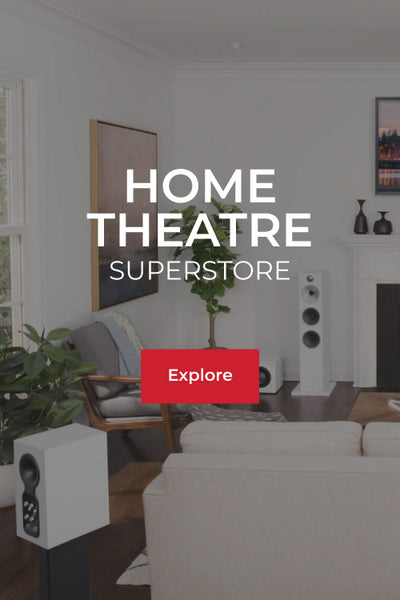
Dolby Atmos vs DTS:X
Looking to maximize the sound capabilities of your home theater surround sound system?, you’ve most likely heard of Dolby Atmos and DTS:X. Understandably, while many may want to get the best sound possible out of their surround sound system, not everyone acquires the latest developments and trends of the consumer electronics industry. For those whom Dolby Digital, DTS, or Dolby Pro Logic were the latest audio codecs when last they bought an AV receiver, Dolby Atmos and DTS:X might leave them bewildered. We’re here to sort this all out.
What is Dolby Atmos?
Dolby Atmos is an object-based surround sound technology that expands on conventional surround sound systems with the inclusion of “height” channels. The object-based part includes sound can be placed anywhere, creating an all-around, encompassing, multi-dimensional sound experience. The inclusion of height channels enhances this immersive audio experience by providing overhead audio, so if, for instance, you’re watching a movie with a scene where an aircraft is taking off or flying, and the filmmaker wants the viewer to experience overhead sound, the viewer gets to hear the full breadth of the fidelity of the aircraft taking off or flying over them. Instead of just hearing the limited, directional sound from front to rear, left to right, and vice versa from a conventional surround sound system, object-based surround sound delivers sound from every direction, including up and down.
Essentially, Dolby Atmos provides a more realistic, engaging, and immersive experience that envelops your listening space. With a 5.1 or 7.1 system, Dolby Atmos will require at least two additional speakers, and accept up to four speakers for height channels. A 5.1 system with two or four height-channel speakers will become 5.1.2 or 5.1.4 system, and likewise with a 7.1 system.
What is DTS:X?
Like Dolby Atmos, DTS:X.is an object-based surround sound technology that can expands on conventional surround sound systems. Unlike Dolby Atmos, DTS:X has no requirements for additional height channels, or requirements for a specific number of speakers in any configuration. Instead, your DTS:X-enabled receiver does all the heavy lifting via its auto-calibration and object-based processor to deliver multi-dimensional sound to the output channel it decides is best.
DTS:X also allows users to adjust the volume of voices. This is a handy feature for dialogue-heavy scenes, since they tend to be difficult to hear clearly in many movies. Enhancing the watching and listening experience a little more.
How to achieve Dolby Atmos or DTS:X in your space?
Getting Dolby Atmos and DTS:X is simple. First, you will need a receiver or processor capable of decoding these audio codecs. DTS:X doesn’t require upward-firing or ceiling speakers, so you won’t need any extra physical speakers to enjoy it. Dolby Atmos, however, does require either upward-firing or in-ceiling speakers for height channels. The height channels can be added to your system with upward-firing speakers. These speakers can be placed directly atop your front or rear speakers. They work by bouncing sound off the ceiling in your listening space to make it seem like sound is coming from above you. Additionally, speakers with a built-in upward-firing Dolby Atmos channel like the floor-standing or bookshelves that can perform height-channel technology. For those with drop ceilings, new construction, or the know-how, in-ceiling speakers can be an option. Unlike upward firing speakers, in-ceiling speakers offer height channels directly firing to the listener’s ears without the need to bounce sound off your ceilings.
If the user prefers a soundbar for their sleek, space-saving designs and clean installations, Dolby Atmos technology is available in soundbar systems like the Sennheiser AMBEO. These soundbar systems feature two built-in upward-firing speakers for object-based audio, an external wireless subwoofer, and Bluetooth audio streaming. Additionally, some 4K OLED displays also have built-in Dolby Atmos tech. The upcoming B8, C8, and W8 OLED displays, all from LG, will feature Dolby Atmos decoding, so keep your eyes peeled for more details from us.
Backward Compatibility with Dolby TrueHD and DTS-HD Master Audio
Both Dolby Atmos and DTS:X are backward compatible with Dolby TrueHD and DTS-HD Master Audio, so soundtracks encoded in these older audio codecs will be playable on Dolby Atmos and DTS:X compatible devices.
Wish to enjoy Multi-Dimensional Audio ?
We hope this makes your understanding towards Dolby Atmos and DTS:X becomes a little bit easier, and that you’re ready to enjoy awesome multi-dimensional, object-based surround sound in all its glory! If you have any questions or need advice, our AV Specialists are always ready to answer any questions you may have. You can reach them by phone at +91 80502 00008.




